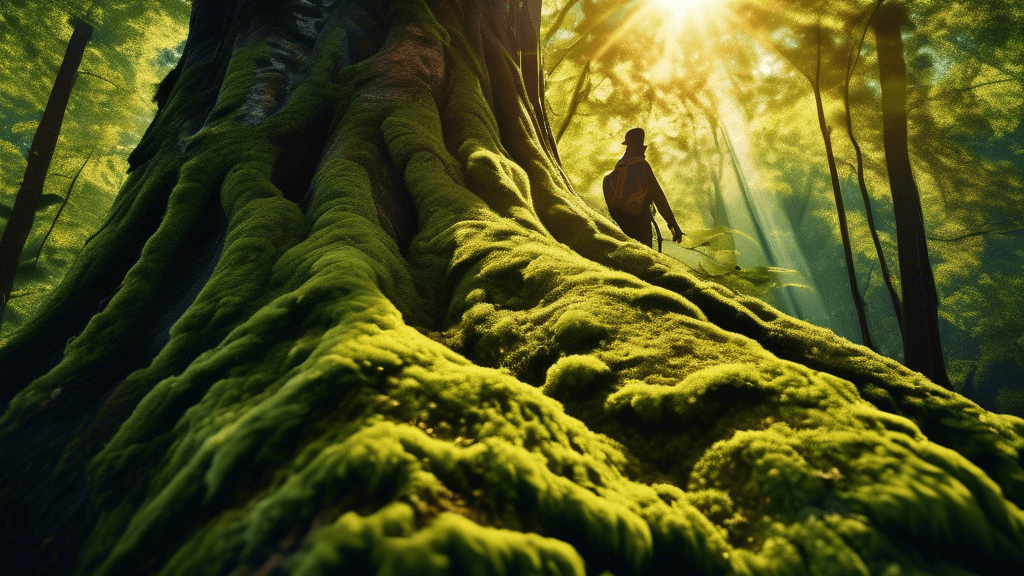
Capturing Nature's Art: Exploring Textures and Patterns Through Photography
Share
Introduction to Nature's Aesthetic: Textures and Patterns
Have you ever paused to consider the intricate details that make up the natural world around us? The roughness of tree bark, the delicate veins of leaves, or the organized chaos in a pile of rocks - these textures and patterns serve as the foundation of nature's artistry. By exploring these elements through photography, one not only preserves the beauty of nature but also uncovers a deeper connection to the environment.
The Art of Observing Nature's Details
Why is it that some photographs of nature leave an indelible impact on us? Much of this can be attributed to the photographer's ability to capture the essence of texture and pattern. This practice transforms a simple nature shot into a compelling story about survival, evolution, and beauty. But how can photographers, whether beginners or seasoned, enhance their skills in capturing these details?
Understanding Texture
Texture in photography refers to the perceived surface quality of the subject. In the context of nature photography, this could range from the smoothness of a pebble worn by countless tides to the jagged edges of a frosty leaf. Texture adds depth and a tactile element to photographs, making them come alive. When viewers can almost 'feel' the image, the photograph transcends visual artistry, engaging other sensory perceptions.
Appreciating Patterns
Patterns, on the other hand, involve repetition in the scene. Nature is replete with patterns; they can be regular or irregular, like the symmetrical segments of a spider's web or the erratic distribution of wildflowers in a field. Recognizing these patterns and capturing them through your lens can echo the inherent symmetry in nature and bring a new level of appreciation to its complexity.
Techniques for Enhancing Texture and Pattern Captures
Perfecting the art of capturing nature’s textures and patterns involves a mix of technical knowledge, creativity, and an observant eye. Here are several techniques that can elevate your nature photography:
- Lighting: Understanding lighting is essential. Early morning or late afternoon light, known as the golden hours, often offers the best texture and pattern enhancement due to the longer shadows cast at these times.
- Angle and Perspective: Changing your angle and perspective can dramatically alter how textures and patterns appear in your photos. Sometimes, capturing an image from a lower or higher vantage point can reveal patterns that aren't visible at eye level.
- Macro Photography: Get close. Very close. Macro photography showcases textures and patterns not observable to the naked eye, presenting a new world of detail in your nature photography.
- Composition: How you compose your photo can affect how patterns and textures are perceived. Use the rule of thirds to guide the viewer’s eye towards points of interest in your frame.
Notable Insights from Experts
World-renowned nature photographer Annie Griffiths once said, Texture and pattern are the skeleton keys to unlock the heart of nature’s beauty. According to Griffiths, the exploration of these elements can deeply enhance the emotional response elicited by nature photography.
Practical Applications and Environmental Impact
Engaging in texture and pattern photography in nature not only has aesthetic benefits but also promotes environmental awareness. A photograph can play a crucial role in conservation efforts, showcasing the delicate balance and vulnerability of ecosystems. These images often inspire actions towards preserving the natural landscapes we cherish so deeply.
Creating Your Portfolio
As you grow in your photography journey, compiling a portfolio focused on textures and patterns can be both a personal and professional asset. This specialized portfolio can not only enhance your technical skills but also showcase your unique perspective of the world - encouraging viewers to stop, look closer, and see the world differently.
Conclusion: A Call to Engage with Nature's Detail
The journey through nature's tapestry of textures and patterns is endless and ever-rewarding. Each foray into nature with your camera allows you to capture unique stories and contributes to the greater narrative of our planet’s beauty and biodiversity. So, why not grab your camera, step outside, and allow the small details to lead you to big discoveries? As we frame nature’s details, let's remember our role in its preservation and strive to capture responsibly, conserve diligently, and share emphatically.
Call to Action: Start observing and capturing the unnoticed and underappreciated elements around you. Share your captures with your community to foster a greater appreciation for our natural world. Together, let's make a difference through the lens of our cameras.





